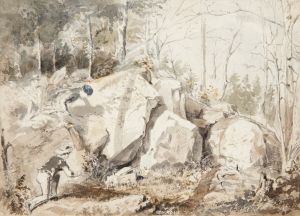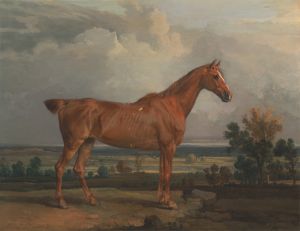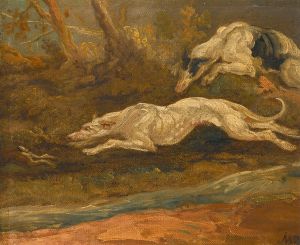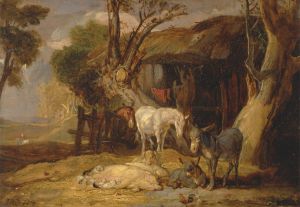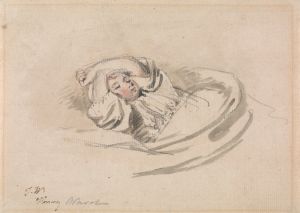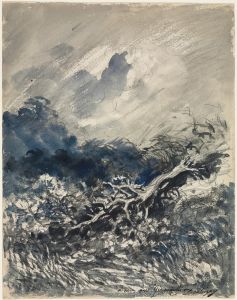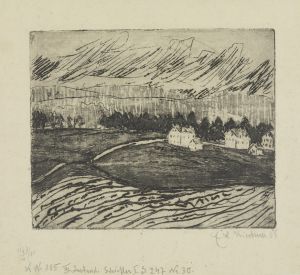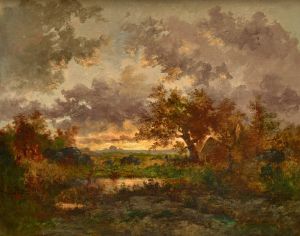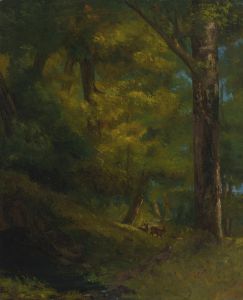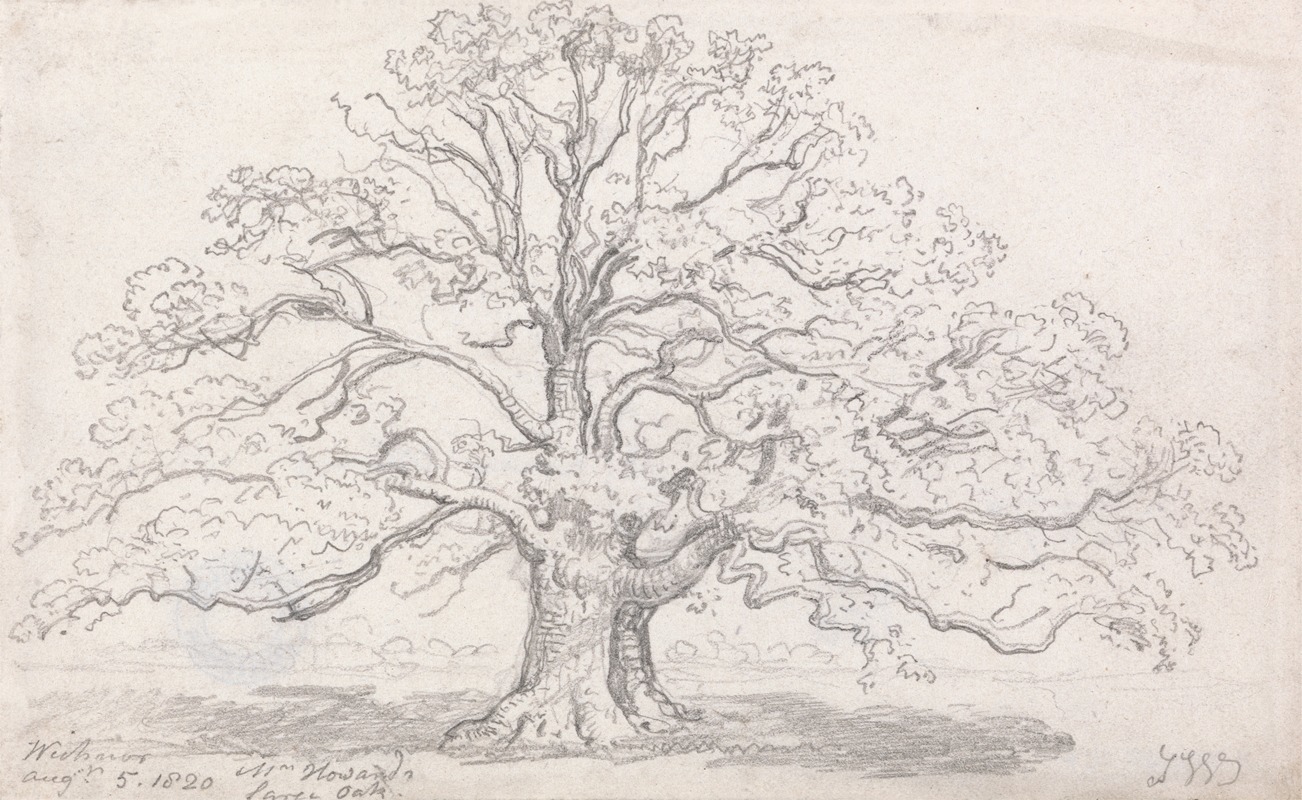
Mr. Howard’s Large Oak, August 5, 1820
A hand-painted replica of James Ward’s masterpiece Mr. Howard’s Large Oak, August 5, 1820, meticulously crafted by professional artists to capture the true essence of the original. Each piece is created with museum-quality canvas and rare mineral pigments, carefully painted by experienced artists with delicate brushstrokes and rich, layered colors to perfectly recreate the texture of the original artwork. Unlike machine-printed reproductions, this hand-painted version brings the painting to life, infused with the artist’s emotions and skill in every stroke. Whether for personal collection or home decoration, it instantly elevates the artistic atmosphere of any space.
"Mr. Howard’s Large Oak, August 5, 1820" is a painting by the renowned British artist James Ward, who was known for his detailed and vivid depictions of animals and landscapes. James Ward was an influential figure in the Romantic movement in England, and his works often reflect a deep appreciation for nature and the rural landscape.
This particular painting, "Mr. Howard’s Large Oak," was completed in 1820 and is a testament to Ward's skill in capturing the grandeur and majesty of natural subjects. The painting features a large oak tree, which is the central focus of the composition. The oak tree is depicted with meticulous attention to detail, showcasing Ward's ability to render the textures and forms of the tree's bark, leaves, and branches with precision and realism.
The painting is notable for its composition and use of light, which highlights the tree's imposing presence in the landscape. Ward's use of light and shadow creates a dynamic interplay that adds depth and dimension to the scene. The oak tree stands as a symbol of strength and endurance, qualities often associated with oak trees in literature and art.
James Ward's choice of subject matter reflects the Romantic era's fascination with nature and the sublime. During this period, artists and writers were drawn to the beauty and power of the natural world, and Ward's painting is a prime example of this trend. The oak tree, in particular, was a popular motif in Romantic art, symbolizing stability, longevity, and the passage of time.
The painting was commissioned by Mr. Howard, although specific details about Mr. Howard's identity or his relationship with Ward are not well-documented. It is possible that Mr. Howard was a patron or a landowner who had a particular interest in the oak tree depicted in the painting.
James Ward's career was marked by a diverse range of subjects, including portraits, landscapes, and animal studies. He was elected as an associate of the Royal Academy in 1807 and became a full academician in 1811. Ward's work was highly regarded during his lifetime, and he received numerous commissions from patrons who admired his ability to capture the essence of his subjects.
"Mr. Howard’s Large Oak, August 5, 1820" is a significant work within Ward's oeuvre, exemplifying his mastery of landscape painting and his deep connection to the natural world. The painting remains an important example of early 19th-century British art and continues to be appreciated for its artistic and historical value.
Today, James Ward's paintings, including "Mr. Howard’s Large Oak," are held in various collections and continue to be studied and admired by art historians and enthusiasts. His work has left a lasting impact on the tradition of landscape painting in Britain, and his contributions to the Romantic movement are still recognized and celebrated.






